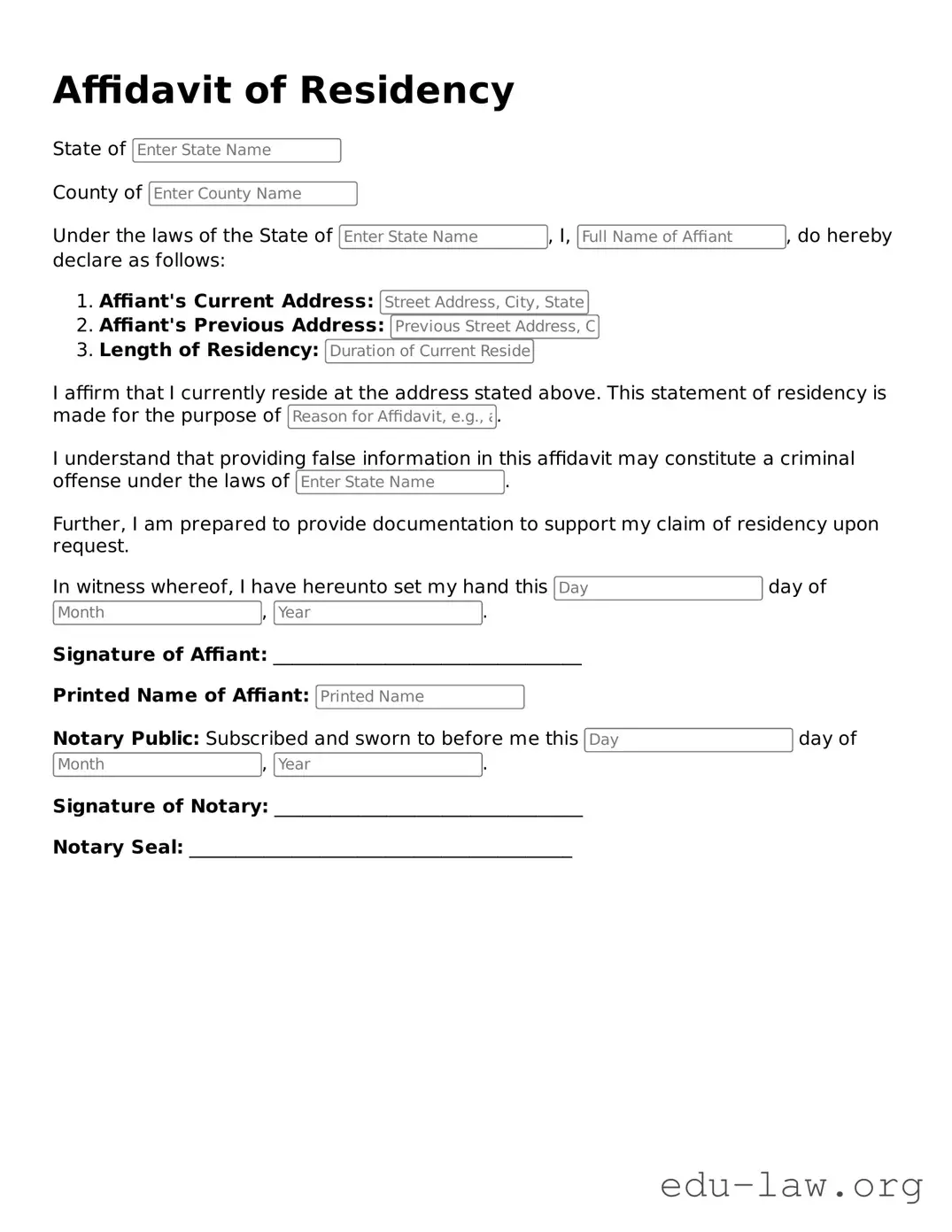Affidavit of Residency Template
The Affidavit of Residency form is a legal document used to verify a person's residence status. This form serves as proof of where an individual lives and can be required for various purposes, such as enrolling in school or obtaining a driver's license. Understanding how to complete this form accurately is essential for ensuring compliance with local regulations.
